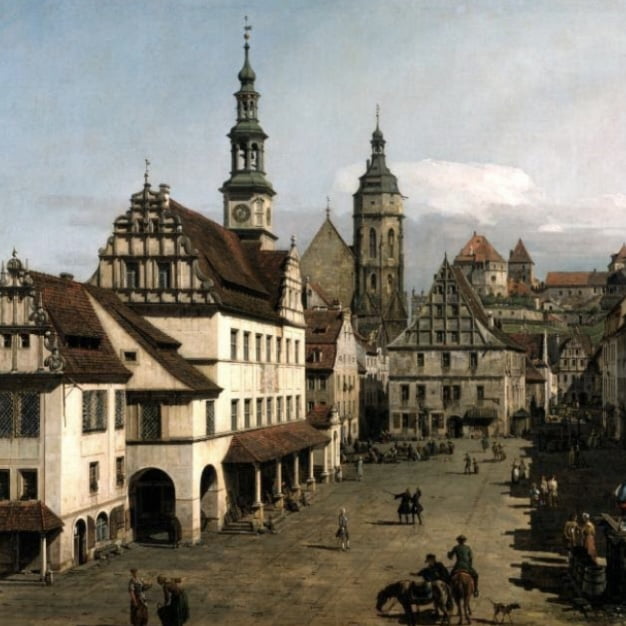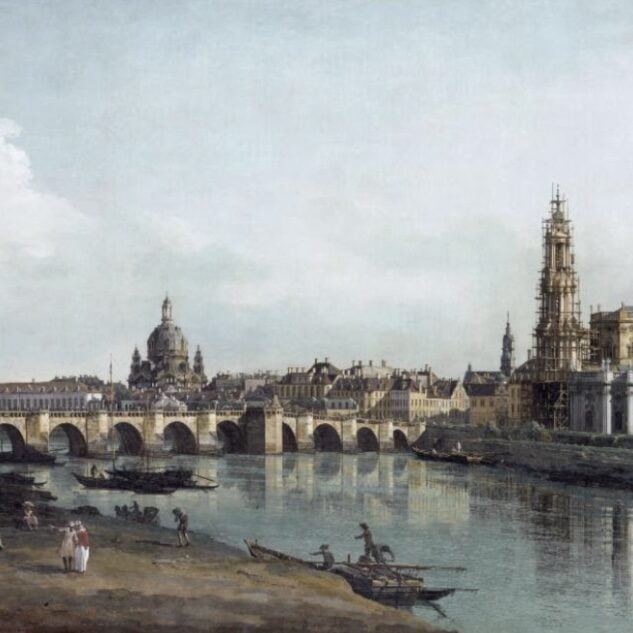The Artist who Portrayed Dresden and Pirna as they truly were: Historic, Magnificent, Panoramic
Bernardo Bellotto, the nephew of Canaletto, and often referred to as Canaletto the Younger or just Canaletto, turned 300 this year. This anniversary is an enormous cause in the Elbe city of Dresden and the neighboring town of Pirna as Bellotto painted extraordinary landscapes that depicted the baroque cities, as well as Fortress Koenigstein as they really were in the mid1700s.
To celebrate the artist and his impact of having created a lasting memory of the city, the Dresden State Art Collections has mounted the exhibition Enchantingly Real: Bernardo Bellotto at the Court of Saxony in its Gem&Alte Meister (Old Masters Gallery in the Zwinger Palace). The exhibition runs through August 28.
In Pirna, the exhibit at the StadtMuseum Pirna, visitors can experience Canaletto’s own large-format etchings of his views of Pirna and the camera obscura that he used to help create his paintings. Here too the citizens honor the artist who memorialized their city.
Bellotto became famous as the court painter for the elector of Saxony, Frederick Augustus II. He arrived in Dresden in 1747 and got right to work. Augustus was famous for his lavish spending on arts and culture and court life and he spared no expense. Bellotto’s famous works are breathtaking depictions of the city and its environs. The paintings measure over eight feet in width and are luxurious in their details. They are practically historical monuments as they depict details of the day-to-day life and times, architecture, and landscapes of Dresden and Pirna in the 1700s.
On display in Dresden is the painting you see above: “Dresden from the right bank of the Elbe below the Augustus Bridge,” better known as the famous Canaletto view, which the artist painted in 1748 and which has shaped the world’s view of Dresden to this day. Also, in the exhibit are the so-called Capricci – paintings in which different architectural set pieces are combined to form atmospheric compositions. Bellotto created these imaginative compositions both during his early days in Italy and during his second phase in Dresden, when he taught perspective as an associate member of the Art Academy.
The artist is who, like his uncle and teacher Antonio Canal, also called himself Canaletto ߝ ranks as one of the most important 18th century painters of city views &vedute. The Dresden retrospective is the culmination of a years-long conservation project and results from a cooperation with the Royal Castle in Warsaw. It features the Gem & Ide-galerie is own collection of Bellotto is paintings, which is itself the largest in the world.
The painter also made his mark on the charming town of Pirna, only 20 minutes south of Dresden, on the Elbe. Between 1753 and 1755, the painter captured the tranquil town on the Elbe in eleven views and at least 25 replicas. The most famous painting, the panorama picture “The Market Square in Pirna” (1753), is now with his other paintings and the Pirnauer Verduten (Pirna landscapes) at the Dresden State Art Collections. In the so-called “Canalettohaus” on the market square, they are showcasing enormous replicas of the painter’s Pirna works. Saxony Tourism has also put together a beautiful film on Canaletto’s life in Pirna that will be part of the special Sightgeist video this November – stay tuned!
A special time for Saxons will be this summer in both cities. Dresden and its citizens will celebrate Canaletto especially from August 19 to 21 when the Dresden City Festival takes place and so many festival goers will be lining the banks of the Elbe enjoying Canaletto is views in person. In Pirna, the town is already in full celebration mode with exhibitions, town festivals, tours and music. The city festival from June 17 to June 19 will be a special time as is the ongoing Pirna Sculpture Summer showcasing at least 16 sculptors from Germany. It is said, that the Seven Years’ War ended Canaletto’s creative period in Saxony in 1763.
WEBSITE
SOCIAL
Instagram #visitsaxony







